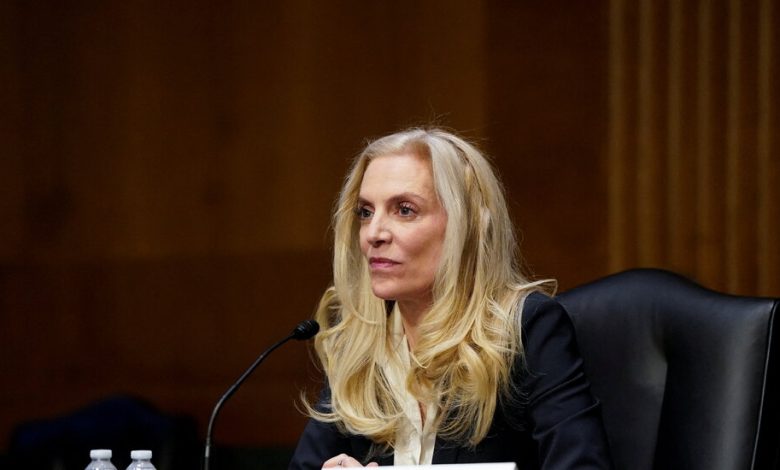As Fed Nears Next Rate Decision, Its Vice Chair Cites Reasons for Hope

The Federal Reserve’s second-in-command offered a hopeful analysis of America’s inflation situation on Thursday, emphasizing that many of the factors that have driven prices higher over recent years may be poised to fade.
“It remains possible that a continued moderation in aggregate demand could facilitate continued easing in the labor market and reduction in inflation without a significant loss of employment,” Lael Brainard, the Fed’s vice chair, said in a speech at the University of Chicago Booth School of Business.
Ms. Brainard’s comments came just days before Fed officials are set to begin the quiet period ahead of their Feb. 1 interest rate decision.
In some ways, Ms. Brainard broke with what her colleagues have been saying about the forces that could keep inflation high. Many central bankers have emphasized the roles that a tight labor market and strong wage growth are likely to play in propping up price increases, but Ms. Brainard focused on other factors that have sped up price increases, particularly when it comes to services.
“There are a range of views on what it will take to bring down this component of inflation to prepandemic levels,” Ms. Brainard acknowledged in the remarks. She noted that wages are an important cost for services firms, so “one possible channel is through a weakening in labor demand.”
But she added that “to the extent that inputs other than wages may have been responsible in part for important price increases,” a reversal in those factors could help to lower services inflation.
In particular, Ms. Brainard noted that supply chain issues and price jumps in fuel might be passing through to elevate some service costs, and those could fade away, assuming supply chains continue to heal and gas stays relatively cheap.
And Ms. Brainard also cited the reversal of swollen profit margins as something that could help inflation to moderate.
Companies have enjoyed an unusual burst of pricing power in the pandemic era as repeated supply chain issues and resilient consumer demand gave them both a reason to try to raise prices and the wherewithal to do so without scaring away shoppers. Many firms have lifted what they are charging by more than they needed to cover climbing costs, swelling their profits.
“The labor share of income has declined over the past two years and appears to be at or below prepandemic levels, while corporate profits as a share of G.D.P. remain near postwar highs,” Ms. Brainard said.
But that might be changing as demand wanes and price sensitivity returns.
“The compression of these markups as supply constraints ease, inventories rise and demand cools could contribute to disinflationary pressures,” she said.
The Fed is expected to raise interest rates again at its upcoming meeting as it tries to ensure that rapid inflation comes back under control. Officials slowed from a string of three-quarter point moves in 2022 to a half-point move in December, and several have signaled that they would favor slowing to a quarter-point move at the February gathering.
While Ms. Brainard did not speculate on what size rate move would be warranted in her prepared remarks, she did emphasize that borrowing costs will need to remain high to make sure that inflation moderates fully.
“Policy will need to be sufficiently restrictive for some time to make sure inflation returns to 2 percent on a sustained basis,” she said.
